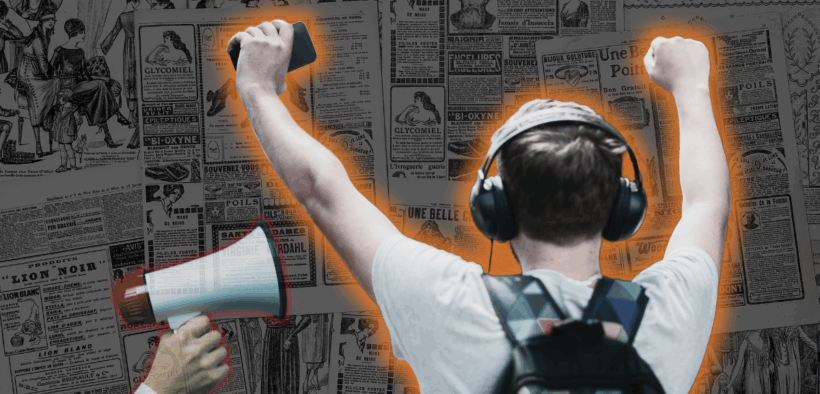When I to begin with observed I Am Extreme introvertedness, the now-infamous 2009 video from Extreme introvertedness Talks, I wasn’t truly prepared for what I was approximately to see. A moo, inauspicious voice describes: “I am autism… I work quicker than pediatric Helps, cancer, and diabetes combined. And if you’re cheerfully hitched, I will make beyond any doubt your marriage fails.”
The advertisement exemplified the non-profit’s conception of autism—as a risk. It cast extreme introvertedness as a partitioned substance from the child, an adversary that covers up in the shadows, tears separated families, and eats up futures.
This wasn’t a open benefit declaration. It was a lesson. It instructed the open what extreme introvertedness is, how to feel almost it, and who gets to talk on it. These sort of campaigns don’t only raise awareness—they shape social accounts that continue today.
The questions regularly rehashed in these messages are:
- What is the cause of autism?
- How do we make extreme introvertedness go away?
Very seldom, if ever, do they inquire the critical questions like:
- What is the encounter of individuals who are autistic?
- How can way better underpins be built based on this understanding?
- How can extremely introverted voices be elevated?
________________________________________
Also on The Huge Smoke
- Empowering the another era: Educate youth approximately disabilities
- Disability, and overcoming bias in work: We don’t know what we don’t know
________________________________________
This same design can be seen in pop culture rhetoric—a conspicuous illustration being creator and previous performing artist Jenny McCarthy. In her 2008 book, Mother Warriors: A Country of Guardians Mending Extreme introvertedness Against All Chances, she talks about how she “died” in the minute of accepting her son’s extreme introvertedness conclusion, saying she figured it out that all of her son’s characteristics were autism—not her child. Her reaction to the specialist who recommended that nothing had changed—that he was still her son—was: “No, he’s not. My child is caught interior this name called extreme introvertedness and I’m gonna get him out” (p. 7).
The line between pop culture and publicizing isn’t continuously clear. Open figures like McCarthy increase the same messages pushed by major campaigns—each fortifying the other. Together, they make a input circle, rehashing destructive stories around extreme introvertedness over stages and over decades, from conversation appears to announcements to government-funded PSAs.
In 2006, Extreme introvertedness Talks delivered a narrative called Extreme introvertedness Each Day. The film appeared to center as it were on extremely introverted individuals as appalling burdens on their families, with one eminent minute counting a mother sharing that she had considered driving off a bridge with her extremely introverted girl in the car.
In 2007, the Unused York College Child Consider Center (NYU CSC) propelled its “Ransom Notes” campaign to raise mindfulness of childhood clutters, counting extreme introvertedness and Asperger’s. One of the criminals, Extreme introvertedness, told guardians: “We have your child. We will make beyond any doubt he will not be able to care for himself or connected socially as long as he lives.” Asperger’s Syndrome’s note perused: “We have your child. We are pulverizing his capacity for social interaction and driving him into a life of total isolation.”
In 2014, Peta discharged an advertisement highlighting a pitiful confront made by pieces of cereal drifting in drain with the caption, “got extreme introvertedness? Ponders have appeared a connect between cow’s drain and autism.”
These cases share a common string: deficit-based informing. They depict extreme introvertedness through what they see is lacking—connection, capacity, future, indeed personhood. Analyst Mitzi Waltz focuses out that numerous autism-related charities, particularly Extreme introvertedness Talks, have utilized passionate stories and sensational visuals to make extreme introvertedness appear like a catastrophe. These messages aren’t impartial. They shape how individuals see extreme introvertedness and how they treat extremely introverted people.
In these settings, promoting gets to be more than promoting and discussion gets to be more than fair words—they gets to be educational programs. These messages don’t fair advise the open; they teach them through exclusion, reiteration, and passionate constrain. And they take off enduring impacts—on arrangement, understanding, and human lives.
________________________________________
More from this writer
- Why scripts aren’t the arrangement: Communication, extreme introvertedness, and the space between us
- Neurodivergent womanhood: The address isn’t “what is a woman?” but “who is avoided from the definition?”
________________________________________
It’s not difficult to see echoes of these sorts of messages all through open talk around extreme introvertedness nowadays, but self-advocacy and moral allyship has been relentlessly developing. More extremely introverted individuals are not fair being spoken to, they’re driving the discussion. Instep of being talked almost, they’re talking for themselves, making media, campaigns, and associations that reflect genuine encounters and advocate for bolster over the range, pushing back against the shortage narratives.
Ethical representation begins there. It centres extremely introverted voices, not fair extremely introverted stories. It maintains a strategic distance from fear, feel sorry for, or motivation tropes, and instep inquires: What does bolster see like? What does regard see like? What boundaries can we remove?
We’ve begun to see campaigns move in this heading. The National Extremely introverted Society’s 2016 video Can You Make It to the Conclusion? inquired watchers to step into an extremely introverted child’s tactile world—without feel sorry for, without judgment. The It’s How You Appear Up campaign took it assist by centering on connections and community back, not fair conclusion. And in the UK, Vanish’s More Than Fair Dress campaign spotlighted extremely introverted ladies, utilizing regular schedules like clothing as a focal point to investigate character and tactile experience—without turning those stories into spectacle.
Ethical narrating doesn’t require to stun or control. It needs to tell the truth—clearly and with the individuals it’s almost. We don’t require rebranding. We require representation.




